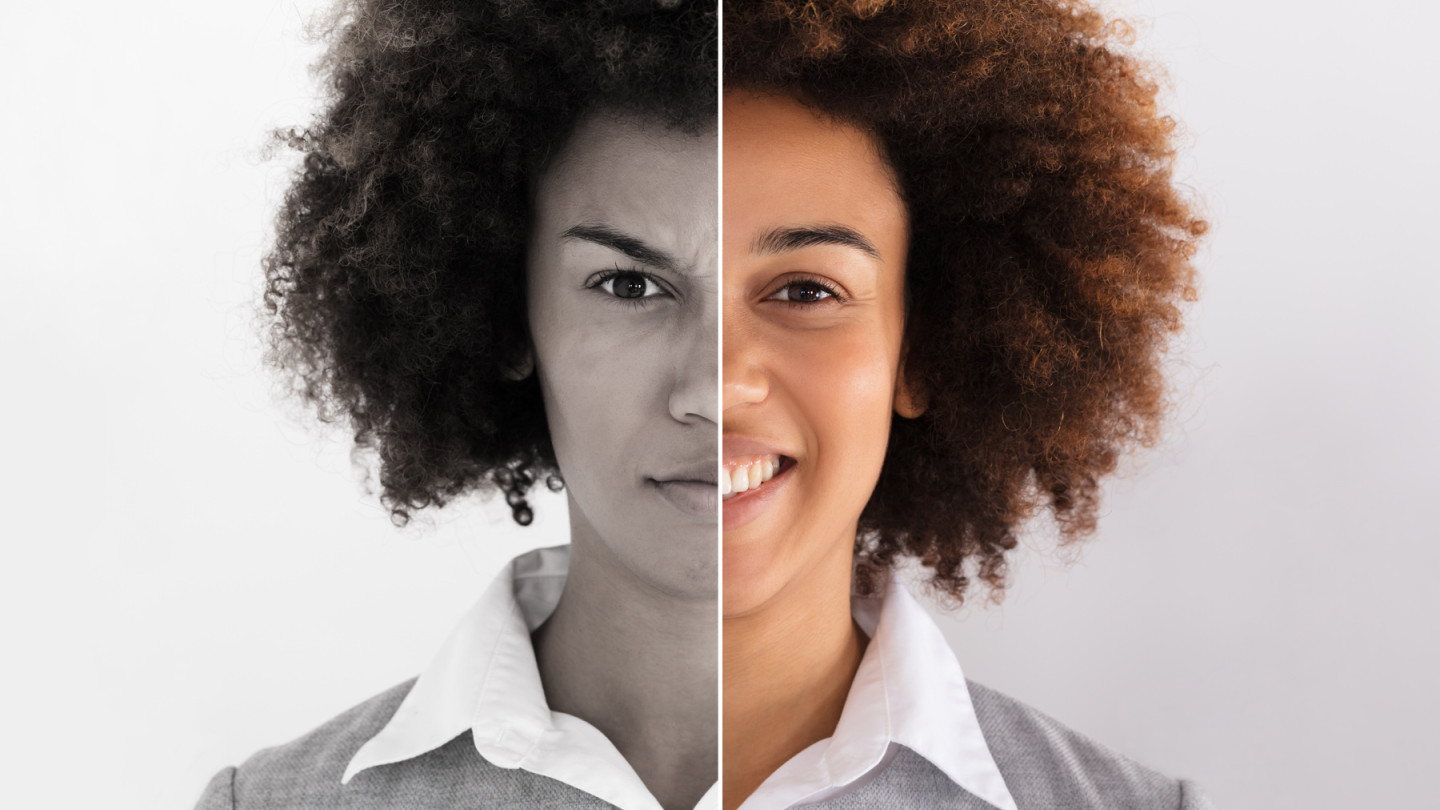New studies shed light on how the brain processes facial expressions

Accurate and rapid perception of facial expressions is a key component of smooth social interaction. The brain processes facial expressions within fractions of a second, enabling quick reactions to both potential threats and positive social cues. The mechanisms supporting perception of facial expressions also support empathy and emotional intelligence.
The brain is best at predicting neutral facial expressions
The Active Mind research group at the University of Jyväskylä investigated how the human brain detects changes in facial expressions and what kinds of automatic mechanisms support social perception.
The study involved 36 adult participants whose brain activity was measured using electroencephalography (EEG) during the experiment. Participants viewed images of faces varying in both identity and expression: neutral, happy, or sad.
The results showed that the brain can respond to facial expressions within 0.2 seconds, which is faster than conscious awareness of the change. This rapid response reflects a process known as predictive coding, a mechanism by which the brain continuously anticipates and adapts to incoming sensory information.
Interestingly, this predictive response was observed only for neutral faces. When the faces displayed emotional expressions such as happiness or sadness, the predictive system was not activated in the same way.
“This may suggest that emotional faces engage other brain systems, such as those involved in emotion recognition, which in turn override predictive processing. We are currently investigating this phenomenon using a larger dataset collected in Jyväskylä and Tartu. We are also examining how depression, anxiety, and stress influence the perception of facial expressions,” says Professor Piia Astikainen, head of the research group.
The study also found that brain activity in response to faces increased with age. This may indicate that visual feature encoding of faces requires more neural resources as people grow older, but further research is needed to better interpret age-related changes in brain function.
Only fearful faces slightly affect working memory
Psychological research has long explored whether working memory – the ability to temporarily hold and manipulate information – can be disrupted by seeing emotional faces. For instance, if a teacher sees fearful faces in the classroom while trying to recall test instructions from memory, could this interfere with their performance?
This question was examined in a meta-analysis combining the findings of 38 previous studies. In these experiments, participants performed memory tasks while images of angry, happy, or fearful faces appeared on the screen.
According to the meta-analysis, emotional faces did not significantly interfere with memory task performance. Angry and happy faces, for example, had no effect on how accurately or quickly participants completed the tasks. Only fearful faces showed a slight interference effect on working memory, but the finding was not consistent across studies.
Working memory thus appears to be more resilient to the potential distraction caused by emotional facial expressions than previously assumed – at least under laboratory conditions. The compiled evidence on the relationship between emotional expressions and memory provides valuable guidance for future research. The authors suggest that using real human interactions instead of static images could yield more ecologically valid results when studying everyday social situations.
More information about ongoing studies and participation can be found on the Active Mind research group’s website.






